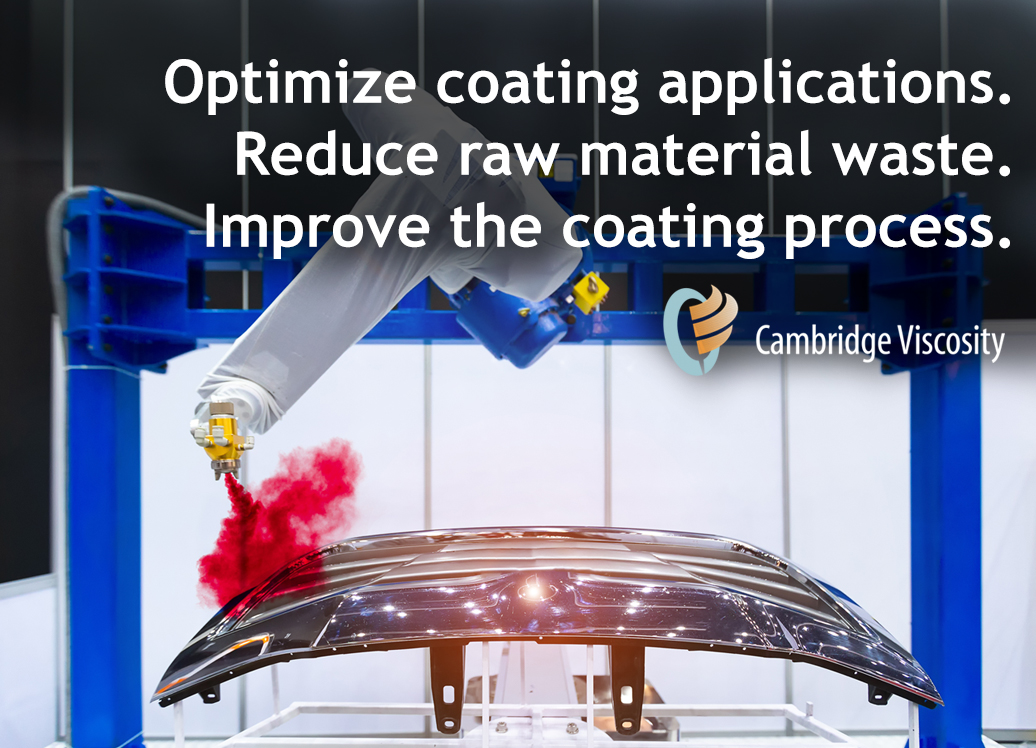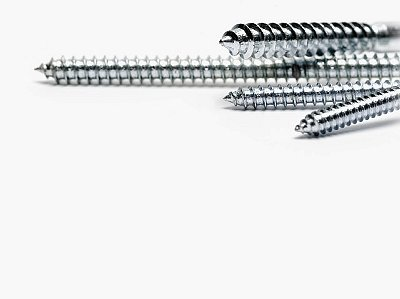We originally wrote this document in 2021 to highlight the challenges that optical manufactures are facing. Now, two years later, Cambridge Viscosity has again looked at the industry and identified some of the most critical challenges faced by optical lens manufacturers.
Part 3 - Challenges Optical Lens Manufacturers are Facing in 2023
Aug 10, 2023 1:13:04 PM / by Admin posted in Coating, ViscoPro 2100, optical coating viscosity
Part 2 - Challenges Optical Lens Manufacturers are Facing in 2023
Aug 1, 2023 9:27:44 AM / by Admin posted in Coating, ViscoPro 2100, optical coating viscosity
We originally wrote this document in 2021 to highlight the challenges that optical manufactures are facing. Now, two years later, Cambridge Viscosity has again looked at the industry and identified some of the most critical challenges faced by optical lens manufacturers.
What Challenges are Optical Lens Manufacturers Facing in 2023?
Jun 29, 2023 11:38:01 AM / by Admin posted in Coating, ViscoPro 2100, optical coating viscosity
We originally wrote this document in 2021 to highlight the challenges that optical manufactures are facing. Now, two years later, Cambridge Viscosity has again looked at the industry and identified some of the most critical challenges faced by optical lens manufacturers.
CVI's Viscometers Support the Manufacture of Safety Eyewear
Jan 26, 2021 12:35:09 PM / by Patrick Riley posted in viscosity control, eyewear viscosity, Coating, process viscometer
Safety eyewear has never been more important than right now. In an industry that was already growing at a rate of 4% CAGR, with a projection to reach $3B by 2025, the COVID pandemic created a massive surge in demand for safety eyewear in 2020.
Ensuring Quality of Wire Coatings with Viscometry
Dec 16, 2020 9:28:49 AM / by Patrick Riley posted in viscosity control, viscosity management, Coating, in-line viscometers, ViscoPro 2100, process viscometer
Optimize coating applications through tighter viscosity control
Dec 2, 2020 9:07:18 AM / by Patrick Riley posted in viscosity measuring solution, viscosity control, coating viscosity, viscosity management, Coating, ViscoPro 2100
When it comes to coatings, product quality can live or die by viscosity. A too-viscous mixture can result in bubbling and an inconsistent, bumpy, “orange-peel” texture. A solution that is not viscous enough can result in a coating that is too thin, drippy, or saggy. Plus, depending on the application, a coating that is too thin may not provide the necessary top-coat protection. In either case, a coating that has an off-spec viscosity in either direction can result in product rejection or product failure.
Medical and Optical Coating Viscosity Control: Lessons Learned
Oct 17, 2019 8:05:00 AM / by Admin posted in process viscometers, viscosity control, coating viscosity, biotech, Coating
Uniform film thickness is essential for effective optical and medical coatings. If the film thickness on a medical device is not correct, the product will not interact properly with the body. If an optical film is too thin, its product efficacy is impaired; if too heavy, visual performance is frequently compromised. Viscosity is critical for maintaining desired film thickness. As the preferred viscometer supplier for many medical and optical coatings worldwide, Cambridge Viscosity has identified seven critical factors for optimal performance.
Controlling Viscosity for Uniform Fine Wire Coating
Jan 24, 2019 10:00:00 AM / by Admin posted in wire coating, coating viscosity, Coating
Boston—How do you control coating on wire that is finer than a human hair? This is the challenge faced by manufacturers of 30 – 300 micron diameter wire known as winding wire, magnet wire or fine wire. These wires are key components in electric motors, transformers and electric coils required in appliances, cars and other powered devices.
Optical Lens Maker Controls Coating Viscosity with CVI Viscometers
Mar 26, 2018 9:00:00 AM / by Admin posted in VISCOpro2000, coating viscosity, VISCOpro1600, Coating, lens viscosity
FOR IMMEDIATE RELEASE
Coating Viscosity Control Best Practices
Nov 7, 2017 9:08:00 AM / by Admin posted in viscosity control, coating viscosity, Coating
Coating viscosity control is a significant challenge for all coating operations. While many factors impact the film’s ultimate characteristics, the viscosity of the coating material is of central importance in achieving consistency. The viscosity of a coating relates directly to the concentration of coating solids in the fluid, which is the basis for the thickness and uniformity of the film.
Incorrect film thickness results in off-quality unusable end products, with unacceptable visual or other performance characteristics. Scrap reduces yield, in addition to the loss of costly coating materials and the environmental costs associated with manufacturing. Periodic manual viscosity checks increase labor costs and are subject to operator variance. Plant operational characteristics—temperature changes, blending variations in coating materials, and process-driven evaporation—frequently make off-line measurements impractical.
A typical coating system includes: supplies of base stock and make-up fluid, an agitated mix tank, a pump, heater, filter, the feed line to the applicator, the applicator itself, and the return line to the mix tank. The applicator can utilize a dip, roll, spray, sputter or other process. To accurately and reliably control coating viscosity, Cambridge Viscosity recommends the following best practices.
1. Utilize closed-loop control. Locate the viscosity sensor so it is measuring the characteristics of the material that is actually being applied to the end product. The best location is in the feed line to the applicator. Sensor information should be fed directly to the electronics that controls the addition of make-up fluid or solvent. An integrated PID controller provides excellent results. A separate level sensor for base stock addition completes the system.
2. Temperature-compensated viscosity is essential. Temperature has a significant impact on viscosity, but not necessarily on coating concentration. Unfortunately, temperatures in production environments are often not well controlled. Viscosity and thus costing solid levels must be correct despite temperature variations. Coatings have repeatable temperature-viscosity relationships that can be readily modeled mathematically, and can be directly programmed into electronics to provide temperature-compensated viscosity for accurate viscosity control despite temperature changes.
3. Offline measurements are important, but must be tightly controlled. Off-line measurements are often the standard to which coaters control viscosity. Unfortunately, they are subject to significant error from a variety of sources. These off-line measurements can be via cups in the production environment, or more sophisticated laboratory equipment. It is important that:
a) The sample is drawn from coating that is typical of that which is being applied.
b) Samples must be taken frequently enough so that variations.
c) Shear conditions in the line be duplicated in the lab.
d) The sample taken and measured such that no off-gassing of the coating is allowed.
e) All aspects of the tests must be handled consistently to negate inherent operator variability.
4) Automated in-line viscosity control removes error. Variations in sample taking and lab techniques are best controlled through automated in-line measurement and control. The sensor can be located so that it measures coating fluid that is representative of the fluid being applied. Solvent or make-up fluid can be automatically added via solenoid control to assure coating fluid consistency. Fluid shear is overwhelmingly controlled for most fluids by the way the fluid is pumped and piped. Consistent shear is achieved by mounting the sensor in the applicator feed line. In this way, operator-induced errors are minimized for accurate and repeatable results.
5) Small size sensors that are suitable for hazardous areas make installation and maintenance easier. Compact sensors are easier to install and maintain. Where sample conditioning is necessary, small sensors require smaller amounts of fluid treatment. Self-cleaning/low maintenance sensors are available in in-line or in-tank configurations.

About Cambridge Viscosity
Cambridge Viscosity is the leading supplier of viscometers for performance coatings worldwide. Cambridge lab and process viscometers use the same core technology and are fully compliant with ASTM D7483. Cambridge instruments are compact, require small amounts of sample, incorporate temperature sensors and are extremely accurate, repeatable and robust. The sensors—utilizing easy to maintain and operate oscillating piston technology—incorporate best practices and are fully proven as reliable devices for performance coating control. Cambridge's global reach provides application engineering support and service wherever and whenever needed.
To learn more visit www.cambridgeviscosity.com.
Digital Viscometer Key to Corrosion Resistance and Building Safety
Feb 16, 2017 10:05:00 AM / by Admin posted in process viscometers, viscosity control, coating viscosity, Coating
Digital Viscometer Key to Corrosion Resistance and Building Safety
Coating Viscosity Measurement Improves Molding Compound Process
Feb 13, 2017 10:09:00 AM / by Admin posted in VISCOpro2000, process viscometers, viscosity control, coating viscosity, Coating
Coating Viscosity Measurement Improves Molding Compound Process
Boston—Cambridge Viscosity’s advanced sensor technology is helping Cytec Engineered Materials streamline production of composite materials used in aerospace, high-performance industrial and
other extreme-demand environments.
Cytec supplies composite materials such as prepregs and molding compounds to companies that mold parts. The ratio of resin-to-fiber is very important, with different applications requiring different ratios. Cambridge’s ViscoPro 2000 viscometers are used to control the viscosity of a resin solution that binds the carbon fiber. Strings of carbon fiber are run through a resin bath where they are coated, and the resin acts as a binder for the carbon fiber so that it can be molded into a part.
“The implementation of the viscometer system has enabled us to continually monitor and control the resin, which allows us to greatly reduce variation within the product,” says Cytec Engineer Troy Farry. Prior to using the viscometers, technicians were required to take measurements at certain intervals in order to determine if adjustments to the resin characteristics were necessary.
This method created a delay in reaction time, resulting in a great deal of variation that made it harder to remain within customer requirements. According to Farry, “not only have the viscometers allowed for a more consistent product, they have reduced the error and scrap rate of our material. By streamlining the process, our technicians can now focus on other areas of development, instead of having to manually monitor the process.”

About Cambridge Viscosity
Cambridge Viscosity is the leading supplier of automated viscometers used by oil exploration and refining, coating, chemical and life science companies to optimize product and process performance. Cambridge Viscosity's sensors and viscometer systems conform to ASTM, DIN, JIS and ISO standards, with a range of models designed to meet specific industry and application needs.
Type certifications include ATEX, CE and FM. CSA certification is available upon request. Cambridge's global reach provides application engineering support and service wherever and whenever needed. To learn more visit www.cambridgeviscosity.com.














